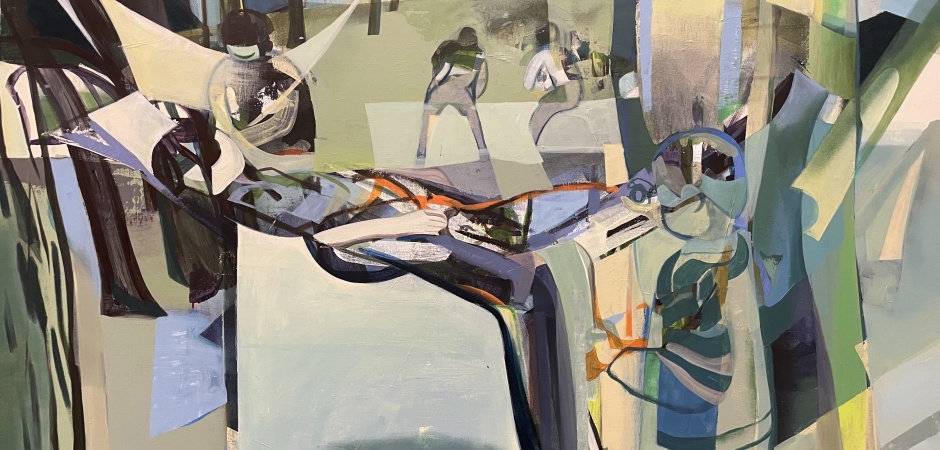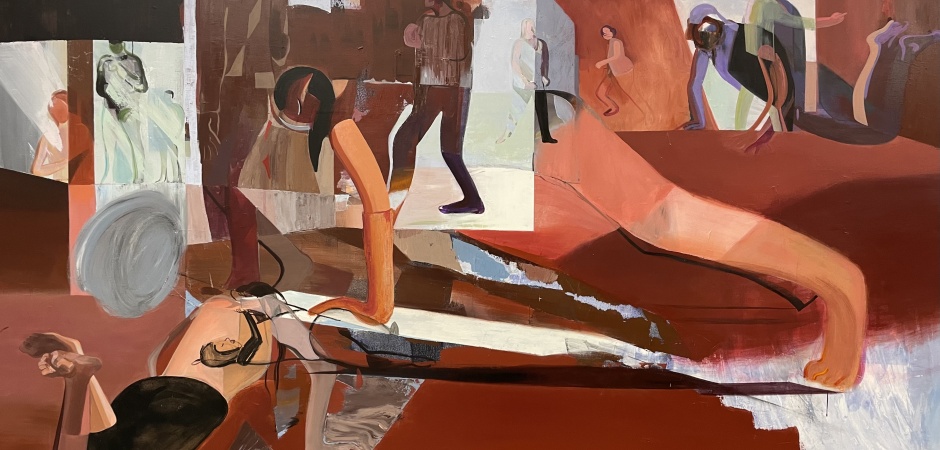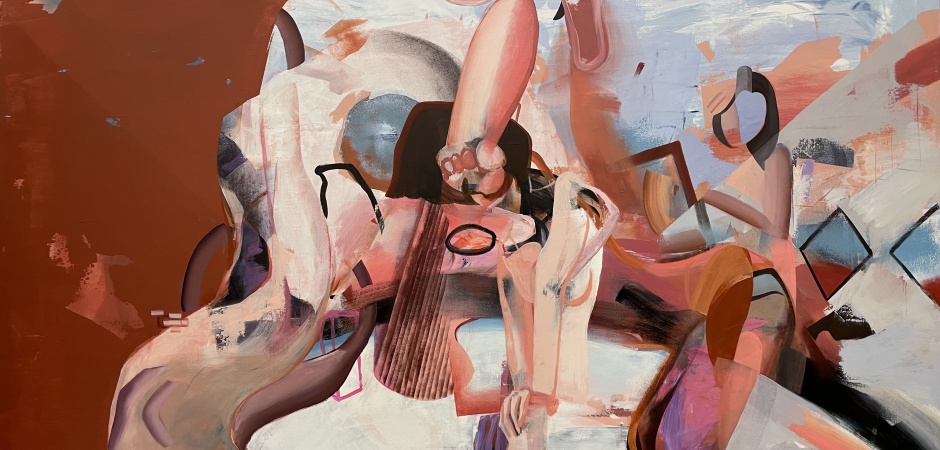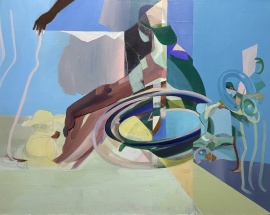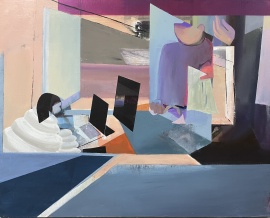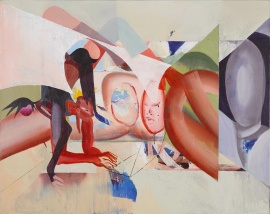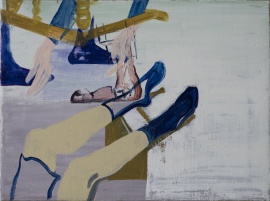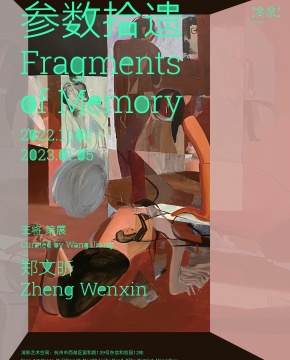Curated by Wang Jiang
Inna Art Space is pleased to announce that Fragments of Memory solo exhibition of the artist Zheng Wenxin, is going to be rolled out on November 5th, 2022. The art works which will be exhibited are mostly the recent works. They are inspired by the screen experience in the digital era, these works conduct image tests through conceptualization. Meanwhile, extending the planarity featuring modernity, these paintings neither pursue complete narrative structures, nor simulate the daily world through depicting the real space. Hence, these works are the combination of concepts and painting, and the expression of individual’s perceptual experience.
The Chinese name of the exhibition “Memories Collected from Parameters”. On one hand, the theme points out the source of prototypes of images used by the artist, that is, the social media apps on smart phones, on which the images of the prototypes were formed and transmitted through the digitalization process. On the other hand, the second-hand feature of these image materials and the incidental access to them are demonstrated. As “incidentally accessed images” stimulating the artist’s desire to explore their expressive force, they have been repeatedly tailored, zoomed in, juxtapose, and modified by the artist in her creative thinking, before becoming a picture with psychological enlightenment. What needs to be indicated is that many works in the exhibition have seen interruptions of thinking, suspension of judgement and emotions from reminiscence in the long period of time from the start to the end of creation, which endows the pictures with tender feelings. Just as said by Zheng Wenxin, “if excessive information fragmentation brings us the reality of intensified entropy, my painting process is just reducing such entropy, and my emotions are released in such process”.
Painting maps the artist’s visual experience. The attitudes of different artists to images reflect their respective art orientations. Since 2000, “photographic painting” has become a trend in Chinese contemporary art field, and developed in a diversified way. It’s abundant media images and widespread photos that have contributed to the creation of such kind of paintings. In addition, more painters grow up in such an “image-based reality”. They are familiar with all elements in the network era, and their works fit more current people’s perceptions, experience, thinking and feelings to a certain extent, which can be construed as the self-redemption of easel painting in the digital era.
In the context of such era, Zheng Wenxin’s creation is different from common image processing methods, as her thinking does not rely on simple selection and reproduction. Her attitudes have always been hided in her eyes, and her paintings are more like the reflections on and manifestations of what she has seen—nowadays, as a new source of knowledge, screen images have brought new visual experience to people, thus changing their viewing patterns and thinking modes. Texts or images in a “window” meet those in other “windows” on the same screen by chance. Multiple sets of data are presented simultaneously, and each element is asked to be viewed separately. As they are not in a systemic spatial relationship with each other, users can chat, play videos and input texts online at the same time. The modern visual system built by the windows on the interface presents a fragmented, concurrent and multi-fold sense of time and space that can change time. Just as stated by Bryson, “the former order of the painting frame has been abandoned and replaced by a superimposed or flat order”. The screen visual language featuring juxtaposition of multiple elements and multiple windows has reshaped people’s cognitive styles. Non-linear and random reading features provided by smart phone screens have led to “wandering reading” composed by a series of behaviors including searching, scanning, skimming and skipping.
Zheng Wenxin’s works respond right to such image reading methods. Her own foundation in painting, sensitivity to media, and feelings injected to painting make her works more humanized compared with the paintings in the post-internet style. What is more intriguing is that she has mixed and solidified her own mental impressions on many screen images in her painting and generated a new image featuring self-consistency and eternity. Meanwhile, they have been again uploaded to the internet, becoming the reading content of viewers in wandering reading in front of the screen.
fold
